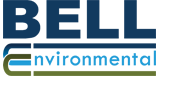Categories
Product Selector
News
- Sep 29, 2024 Measure Every Drop: The Kalyx-RG Rain Gauge Excels in Wet Weather Conditions! Accurate Rain-Fall data... Read more
- Sep 19, 2024 Introducing the BFU-300 Open Channel Area Velocity Flow Meter Range Introducing the BFU-300 Open Channel Area Velocity Flow Meter series, available in handheld and fixed versions. This low cost solution provides bi-directional flow measurement in partially filled pipe... Read more
- Sep 6, 2024 M2000 Mag Flow Meters now MCERTS approved The M2000 Mag meter has now been MCERTS approved for specification within the UK wastewater sector. ... Read more

